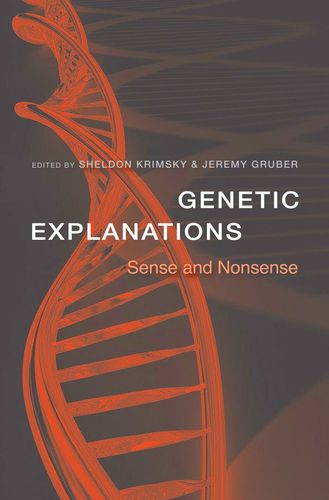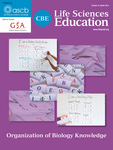Denying Genetic Causality
This edited volume is a project from the Council of Responsible Genetics, a private organization based in Cambridge, Massachusetts, whose mission, as stated on its website, includes as one of several goals to “expose oversimplified and distorted scientific claims regarding the role of genetics in human disease, development and behavior.” This book represents such an effort. Editors Krimsky and Gruber are chair and president/executive director, respectively, of the organization and appear to have solicited contributions to the book from affiliates and other colleagues. Fewer than half of the 16 chapters are written by active laboratory scientists, however, and as a result, the book suffers from arguments clouded by imprecise use of terminology and preconceptions about genes and their functions. One might consider this book, or parts thereof, for an advanced undergraduate genetics class in which positions counter to the mainstream scientific view are presented and evaluated, and in which students are challenged to critically assess the quality of support for all arguments.
The general theme of this book is to question the role of genes (and reproducible molecular mechanisms, more broadly) in cancer, behavior, psychiatric disorders, evolution, and other phenomena. One chapter promotes the tissue organization field theory (TOFT) against the somatic mutation theory of cancer. TOFT was proposed by the chapter authors in 2011 (Soto and Sonnenschein, 2011) but has not found traction and has garnered little attention beyond an initial refutation (Vaux, 2011). The authors assert that cancer is a disease of development and tissue repair primarily from environmental exposures and independent of genetic changes. Most cancer researchers agree that environmental factors can trigger cell growth but that ensuing mutations complete the picture in the genesis of malignancies. This chapter would be a good starting point from which one could assign students to explore papers cited in the Cancer Genome Atlas database, a growing resource compiling cancer genome data and subsequent validation in other systems of the effects of mutations found. In another chapter, a nonscientist author asserts that “in only a small percentage of cases are genes notable contributors to breast cancer,” implying imprecisely that only rare inherited cancer predisposition is genetic, when in fact cancer stemming from somatic mutations is also gene based. To assert that cancer stems only from environmental effects, to the exclusion of genes, overlooks the intertwining of the two arenas—radiation induces somatic mutations, for example, and estrogen mimics trigger cell division, which sets the stage for additional new mutations during DNA replication. 
Other sections of the book argue a lack of evidence for genetic influence on behaviors and psychiatric conditions. One chapter centers on several refuted ideas of biology and behavior (for example XYY and monoamine oxidase genotypes associated with aggression), with the intended implication that all other biological connections to behavior must be suspect. A chapter on autism accepts but downplays a partial role of genetics in the disorder, while emphasizing environmental exposures. Students exploring this topic could examine the growing literature on de novo mutations found in autism patients (Huguet et al., 2013), among other autism studies, to see how interlocking causes of the disorder might best explained by the available data. In the context of disorders such as schizophrenia, the book does not acknowledge or address the literature reporting genetic associations with psychiatric predispositions. In a troubling instance, a cited reference is misrepresented as refuting a genetic connection to schizophrenia; the reference in question (Collins et al., 2012) actually reports genome-wide association studies showing linkage of schizophrenia to particular loci (just not to the genes originally suspected). The same research group the previous month reported copy number variations associated with schizophrenia (Kirov et al., 2012), but this finding was not cited. Psychiatric genetics is a rich area for students to explore, and the contrarian viewpoint of the book can provide a starting point to trigger students’ delving into the literature.
Genetic Explanations: Sense and Nonsense includes two chapters with assertions counter to the neo-Darwinian synthesis of evolution. One claims, fairly misleadingly, that “a growing number of evolutionary biologists … believe that macroevolution was the result of mechanisms other than natural selection.” Another states that “not genomic DNA but epigenetic environmental influences … overwhelmingly affect our health and well being.” The idea that gene regulation via environmental and epigenetic effects is somehow not reducible to genes (and that genes are therefore not central to evolution) would be an interesting subject for students to explore in the literature to see what the data actually support.
This book is recommended only for use in advanced classes centered on weighing evidence and dissecting arguments in scientific controversies. The book's countermainstream assertion of a lack of significant genetic connection to cancer, autism, schizophrenia, and other phenomena provides multiple opportunities for students to explore the scientific literature surrounding such genetic connections.



